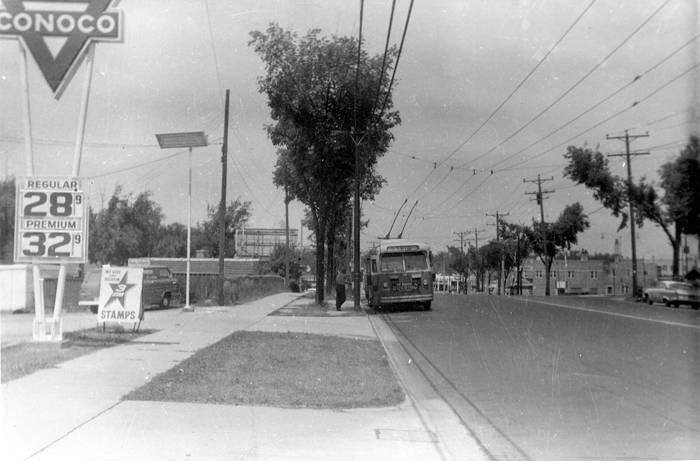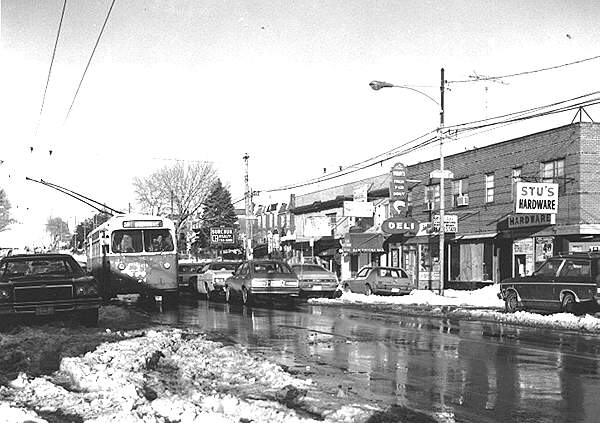Environment & Energy
Related: About this forumGetting On The Train: Ridership Highest Ever For Amtrak As Reinvestment Arrives For Some Services
Given emerging data in 2012, it's becoming increasingly clear that the post-war automobile era in the United States is now in well-articulated decline. Accordingly, it makes sense to note the beginning of a long-term supertrend that is just getting started: the resurrection of America’s rail system.
At Seattle’s historic King Street Station (a classic example of early 20th Century railroad architecture), a nasty looking dropped-tile ceiling – which hung above travellers for decades – was removed late last year to reveal ornate plasterwork as the building undergoes extensive renovation. These cosmetic (and structural) alterations are part of a wide-ranging upgrade to the entire Cascades passenger rail service that runs from Vancouver, British Columbia, to Eugene, Oregon.
In Tacoma, for example, a new station will either be built or renovated, and part of the Cascades line will be re-routed from its current shoreline path more directly through that city. Elsewhere, bridges are being rebuilt, track is being upgraded, and other infrastructure improvements are underway as part of the $500 million program to resurrect more efficient, faster inter-city rail in the 466-mile Amtrak route through this part of the Pacific Northwest.
These changes will not bring European-style high-speed rail to the United States. Indeed, in many similar projects across the country, top speeds of 125 mph will characterize new system capability, rather than the average speed actually maintained from city to city. However, the incremental improvements now underway will become the platform for the next phase of investment, as Americans are increasingly persuaded to limit their car ownership and make rail transport part of their lives once again.
EDIT
http://www.energybulletin.net/stories/2012-11-01/getting-on-the-train
kooljerk666
(776 posts)I hope GM/Ford/chrysler start looking at trollies, rail cars & all other aspects of mfg to bring back steel on steel transit.
Electric freight trains use 1/12 the oil that diesel uses!!
What I want to see is more sleeper cars, lots more & lower prices for them rather than hi speed. I'd rather spend 3 days on a train to go coast to coast than 6 hours on a jet!
Also I would love to see big discounts for seniors & disabled persons. This would make travel safer for everyone concerned!!
http://steelinterstate.org/
http://www.dailykos.com/blog/SundayTrain
pscot
(21,024 posts)alongside the tracks to provide onsite power with zero transmission loss.
kooljerk666
(776 posts)Oil/Coal guys hate rail...............
Steel Interstate passengers & freight trains move on renewable electric energy instead of fossil fuel, enjoying order of magnitude design efficiency advantages over trucks and cars.
Why NOT Convert Trucks to Natural Gas?
Converting over-the-road trucking to Natural Gas would be astonishingly expensive for the return on investment, a proposed congressional bill includes a $65,000 subsidy per converted truck. Tens of thousands of lane-miles of new highway would be required to accommodate projected freight growth, and that's just the beginning...
Oil-Free, the Steel Interstate Reduces Oil-Dependence Risks
Peaking oil price spirals and supply interruptions hold our economy, our national defense, even transporting food to our people, hostage to oil. The Steel Interstate System moves people and essential goods, powered by domestically-generated electricity--virtually FOSSIL FUEL-FREE.
Multi-modal efficiencies
Rail freight fuel-efficiency excels. Intermodal freight uses the flexibility trucks offer to haul the shipment from the seller to a rail terminal, then the load is carried the safest and most fuel-efficiently way--on an oil-free electric train, finally off-loaded at another rail terminal a truck makes the final delivery.
The truck conversion really pisses me off, as does the damage they do to the roads & sucking up money from taxpayers to subsidize a shitty industry.
One good thing is no one want to drive over the road anymore, there was a big article in Philly Inquirer, truck driving jobs are going unfilled.
Maybe when the defense budget is slashed executives at Lockheed & Boeing can take up over the road trucking. They will have fun working like a dog for crappy wages like everyone else has had to for the last 30-40 years.
OnlinePoker
(5,722 posts)... since it was GM that killed the majority of electic trolleys in the first place by either intimidating rail companies and banks to shut down the service or buying them up outright and shutting them down.
http://www.lovearth.net/gmdeliberatelydestroyed.htm
kooljerk666
(776 posts)and a few weeks ago it was about the Allegheny Transit System (Pittsburgh PA) & it was basically the same story that was told in Rodger Rabbit.
I have a great amount of anger over the whole thing. We might have lost WW2 if not for the RR's & after the war the gvt told them drop dead & built the interstate & taxpayer funded air travel.
I am getting a headache just thinking about it, but I hope we plan ahead & GM & the rest have a well trained workforce & could build anything. I hope they start thinking ahead soon.
RFD-TV train shows are "I love toy trains" & "Trains & Locomotives".
These are great shows when politics is making your head split, relaxing & educational.
I just read that & now have a headache, at least since oil is running out I can hope that GM/Ford & all associated industries can take a clear & brave look at our future & make some rational decisions.
I have a 20 yo car and 20 & 30 yo m/c's and at 51 yo myself, I will never need another one of either.
happyslug
(14,779 posts)Trackless Trolleys, sometime called Trolleybus, is where you have an electric bus, powered by overhead wires, but on rubber tires. The advantages are as follows:
1. Only need to maintain overhead wires, not the tracks not the road below those wires
2. Can move around obstacles in the way (and if it has some batteries, operate for 10-15 minutes without have to be attached to any wires).
The disadvantages are as follows:
1. No track to keep the Trolleybus on a straight line, thus can NOT be as long as a Streetcar (Through modern Computers assist driving system can address this problem).
2. Harder to match bus door with curb, in a true Streetcar, the tracks will force the Streetcar to stay within a 1/4 inch of where it should be, thus it is easy to match up with stops so you can eliminate steps. Trolleybuses are like buses, up to the skill of the driver who tends to be on the FAR side away from the curb. To be safe, you have to assume people will have to stop up into a bus or trolley bus.
If you want to separate Transit from Automobiles, Streetcars are the better choice (you have to maintain the right of way anyway, and steel wheels on steel rail is still the most energy efficient way to propel a vehicle)
If, you have to operate on paved roads, WITH automobiles, Trolleybuses are better. They can moved around cars stopped in their path AND no cost to maintain the right on way (When Streetcars share roads with cars, it is the Streetcar that bares the cost of maintaining the Road, Gasoline taxes are NOT used to maintain such roads. This was the chief reasons Streetcars were replaced by buses, to cut the cost of the transit provider as to maintaining the road bed).
Also remember, such trolleybus systems can also provide power to trucks on the same routes.
http://en.wikipedia.org/wiki/Trolleybus
They were quite popular at one time, still in use in Seattle, Philadelphia and other cities, but here is a photo that sums up way they are now gone:

The problem is on the left, 28.9 cents for Gasoline.
http://www.thetransportco.com/imagelib/sitebuilder/misc/show_image.html?linkedwidth=actual&linkpath= &target=tlx_new
&target=tlx_new
Photo of a Trackless trolley doing what no streetcar can do:
http://www.phillytrolley.org/tracklessindex6.html
List of Trolleybuses in the US:
http://en.wikipedia.org/wiki/List_of_trolleybus_systems_in_the_United_States
http://www.lowtechmagazine.com/2009/07/trolleytrucks-trolleybuses-cargotrams.html
http://www.lowtechmagazine.com/2008/01/bumper-cars-o-1.html
FBaggins
(26,748 posts)Overhead wires.
happyslug
(14,779 posts)Thus overhead wires are NOT a disadvantage or advantage when comparing the three with each other (With its own right of way, trains can use third rail technology instead. i.e a rail ON the ground that supplies the power, the problem with third rail is that it is easy for animals, pets and people (especially children) to touch and be electrocuted. In areas where such contact can be minimized, such as the New York Subway System, an option, but when the Pennsylvania Railway electrified it lines in the Northeast after 1905. it was with an overhead wire not a third rail for that reason).
On the other hand, when compared to conventional buses, overhead wire is a disadvantage. But an electric trolley bus will have better acceleration then a convention bus (electric motors provide more power to the wheels quicker then other engines), will be able to go uphill faster (again due to its electric motors), climb steeper hills faster, last twice as long, and at a much cheaper price in terms of energy. So there are ADVANTAGES of using overhead wires.
Furthermore, if you are careful you can HAVE a SAFE third rail system even on a public street. Washington DC Streetcars were known for this, for it was illegal to have overhead wires in DC.
Here is a picture of the line, now long abandoned, that shows the two rail lines and the middle of the rail is the "Slot" where the power line went down into the ground to attach:

Here is a picture of a DC Streetcar passing the Washington Monument, notice NO overhead wires.

Now with modern Technology things can be different, Sweden has built a system of rapid charging station at each end of a bus route of about 10 km (about 6 miles). This is a SPANISH product, but it is best tested in a cold weather area given that batteries are known to lose power in cold weather:
http://www.opbrid.com/
There is another Youtube of what I believe is a Japanese System, where the bus is charged at every bus stop for about a minute. This would permit greater range but at the cost of having more charging stations.
A Made in USA bus with a similar capability:
http://inhabitat.com/fast-charging-electric-buses-coming-to-southern-california/
And Mazda has sold a similar bus to Foothill Transit in the LA area of California:
http://www.mazdainthenews.com/l-a-gets-worlds-first-rapid-charge-electric-bus/
Speck Tater
(10,618 posts)In the last year I've taken a total of 10 Amtrak trips, and one short steam excursion trip; more than my previous lifetime total of 4 train trips. Some of those trips were only a couple hundred miles, but two were coast to coast, Pacific to Atlantic and back again. Trains are fun!
dixiegrrrrl
(60,010 posts)And of course the problem with "persuading car ownershio"is that few alternatives remain available.
I am glad to hear that Amtrack is returning service to the Pac. NW.
Now, if only there were a way I could get from the "middle of nowhere" to the West Coast without flying or driving....
We have railroad tracks half a mile from my house, we have 4 towns, including mine, which have rusted out train depots. Once rail was THE transportation of this area.
But now, the occasional trains that go by are freight.
tanyev
(42,564 posts)We took one train trip and loved it. We'd do it a lot more often if it went to more of the places we want to visit.
FBaggins
(26,748 posts)Look... I love trains. Love 'em.
But it's silly to say that the automobile is in decline while rail is at the start of a super-trend.
This takes long-term extrapolation of a short-term curve to the extreme.
